new posts in all blogs
Viewing: Blog Posts Tagged with: art books, Most Recent at Top [Help]
Results 1 - 18 of 18
How to use this Page
You are viewing the most recent posts tagged with the words: art books in the JacketFlap blog reader. What is a tag? Think of a tag as a keyword or category label. Tags can both help you find posts on JacketFlap.com as well as provide an easy way for you to "remember" and classify posts for later recall. Try adding a tag yourself by clicking "Add a tag" below a post's header. Scroll down through the list of Recent Posts in the left column and click on a post title that sounds interesting. You can view all posts from a specific blog by clicking the Blog name in the right column, or you can click a 'More Posts from this Blog' link in any individual post.
I'm not sure what led me to take my copy of
Don't Hold Me Back by Winfred Rembert off my shelf yesterday to show to a family member. I met Rembert back in 2004 when we were both nominated for the Connecticut Book Award, back when there
still was a Connecticut Book Award. (Not to be confused with the
Nutmeg Award, folks.) But as a result, I looked up Rembert today.
Wow.
Winfred Rembert is a
leather folk artist whose work has gotten around. He's had
gallery shows that were reviewed in the
New York Times. He's had other
gallery shows. Oh, look. Another,
very recent show. The
Huffington Post carried a piece about him. A
book has been written about him. And
a documentary has been made.
I was going to offer my copy of
Don't Hold Me Back to a couple of my family members who are library/reading teacher people. But I love folk art! And Rembert signed it! I think I will make them drag it from my cold, stiff hands. They can look forward to fighting for it.
Here's something I've been thinking about this afternoon. I love a lot of the folk art I've run into over the years. It's not so much the execution, which I'm not qualified to judge, though there are definitely some things I've liked more than others. It's that these people, who have little to no art training, need to create so badly that they won't let the fact that they have only a vague idea what they're doing stop them.
So why don't I feel the same way about work from untrained writers?
And was I the equivalent of a folk writer when I started publishing?
This is Tuesday, so I should be doing a time management post. However, I'm recovering from a minor illness during which I've been working in sprints. I'm still lolling about reading and sleeping and saving my sprinting time for a work in progress. However, Blogger is letting me access it from my desktop today, which it hasn't done for a couple of weeks. That means I can get to my image file and finally upload this picture book post I did several weeks ago and have been saving.
I did a little art picture book binge recently. One book would be classified as an "art book" by just about anyone. The other I'm classifying as an art book because, well, this is my blog. I can classify anything anyway I want here.
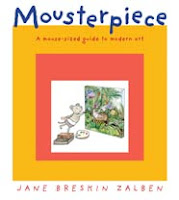
Modern Art for Kids. And Me.
I don't know how kids feel about
Mousterpiece by
Jane Breskin Zalben, but it sure helped me develop a better understanding of modern art. Do kids need to know about modern art? Do they need to know about art at all? Does anyone? Personally, I think art is a form of communication and being able to comprehend and enjoy it is as valuable as being able to comprehend and enjoy any other kind of communication. On top of that, like other types of communication it expresses something about the culture that produces it, so it has a place in the study of history.
Okay, enough pontificating.
Mousterpiece is about a mouse name Janson who lives in a museum and stumbles upon the modern art room. She is amazed and inspired and begins painting in the style of the paintings she sees there. This is a story about appreciation. There is no push to teach artists or styles or names of paintings. All we see are Janson's paintings done in the style of Warhol, Matisse, Picasso and many more. Anyone (probably adults like myself) who wants a very quick and easy lesson on the artists Janson is inspired by can turn to a four-page spread at the back of the book. It's one of the best Notes sections in a picture book that I've ever seen.
Narrative in Art
A piece of art often expresses a narrative, even when it is abstract rather than representational, which is probably its main attraction for me.
Bluebird by
Bob Staake is an example of a picture book that's narrative is expressed totally through art. All the illustrations are done in shades of blue and gray and while the work could be called representational, in that it represents what it is and we can recognize it, it's not all realistic. The human figures, for instance, are cartoonish but fit in with the overall settings in which they're placed.
While I'm not particularly fond of the narrative told in these pictures (I find it a little "important" and even somewhat predictable in the way important children's books can be), it is a really fine example of art communicating story. So much so, in fact, that in the early pages I found myself going, "What? What's going on here?" It wasn't until the disturbance came to the main character's world (the bluebird's? the child's?) that I became engaged. Because disturbance is the beginning of story.
By the way,
Bluebird is mentioned in one of those
What Makes a Good Picture Book About articles in the most recent issue of
The Horn Book. Giving you the whole title would be a bit of a spoiler for
Bluebird, but the article is on-line, so those of you who don't mind spoilage can follow the link and read it.
 This is one of the most stunning picture books I’ve ever seen. I’ve been looking forward to it ever since Ritva used the winter picture on the invitation as an e-Christmas card last year. And despite having been to Melbourne on Monday and Tuesday, and my horror of going there more than once a week (or once a month!) there was no way I was going to miss the launch – I wanted to see those paintings ‘live.’ They were as wonderful as I’d expected from that sneak peek, but the book is even better. It’s beautiful not just to see, but to hold; everything about it is beautifully crafted: the binding, paper quality, design... The words, of course, are Oscar Wilde’s, so they’re hard to improve on, but the paintings have added further depth – and I love how she’s humanised the giant. He looks an 18th century country gentleman, just oversized. Reading the story unillustrated, I’ve always pictured a Jack the Giant Killer type of giant – this version makes much more sense.
This is one of the most stunning picture books I’ve ever seen. I’ve been looking forward to it ever since Ritva used the winter picture on the invitation as an e-Christmas card last year. And despite having been to Melbourne on Monday and Tuesday, and my horror of going there more than once a week (or once a month!) there was no way I was going to miss the launch – I wanted to see those paintings ‘live.’ They were as wonderful as I’d expected from that sneak peek, but the book is even better. It’s beautiful not just to see, but to hold; everything about it is beautifully crafted: the binding, paper quality, design... The words, of course, are Oscar Wilde’s, so they’re hard to improve on, but the paintings have added further depth – and I love how she’s humanised the giant. He looks an 18th century country gentleman, just oversized. Reading the story unillustrated, I’ve always pictured a Jack the Giant Killer type of giant – this version makes much more sense.  The exhibition, at Melbourne Art Rooms, 418 Bay St, Port Melbourne, is up till 20 December. And if you can’t buy any of the paintings (those that weren’t sold last night!), you can get them all inside the book. (That was what I decided to do.) The book is published by Allen & Unwin Australia and should be available in all good bookshops.
The exhibition, at Melbourne Art Rooms, 418 Bay St, Port Melbourne, is up till 20 December. And if you can’t buy any of the paintings (those that weren’t sold last night!), you can get them all inside the book. (That was what I decided to do.) The book is published by Allen & Unwin Australia and should be available in all good bookshops. I also admit that seeing the exhibition made me feel lucky all over again that Ritva illustrated one of my books,
Poppy’s Path, years ago. It was a little chapter book, so they were black and white line drawings: fantastical, perfect, showing definite traits of Ritva's northern European background (Finland) – and totally unique.
All of her art is worth looking at, and The Selfish Giant and its exhibition are a great opportunity.
 |
| Art from Poppy's Path |
By:
floating lemons,
on 7/5/2012
Blog:
Bit by Bit
(
Login to Add to MyJacketFlap)
JacketFlap tags:
Art books,
Colored Pencil,
Mariana Musa,
art journey,
book girl illustration,
the creative license,
illustration,
Drawings,
danny gregory,
Add a tag

Six years ago, my life changed. I picked up my coloured pencils and started drawing again after an 18-20 year break from art. "Book Girl" above, was one of the first pieces I drew. I then picked up Danny Gregory's The Creative License: Giving Yourself the Permission to be the Artist You Truly Are, and that was pretty much that.

I stopped stressing out over absolute perfection. It wasn't easy, I promise you, but I went through the exercises in the book and discovered that 'imperfection' in art, as in life, was not only permissible, but could achieve truly beautiful results. I started drawing daily, joined communities online, and then started this blog. Thank you, Danny Gregory!
I still have a long way to go and a vast amount to learn, but I'm thoroughly enjoying the process, and am celebrating the 6 year path it has taken to get me to this point. Cheers.


Beyond the Stick Figure by Karin Taylor
I'm still very blocked where my art is concerned. So when I saw that Karin had published a book about her experiences and her art, I leapt at the chance and bought it. It hasn't disappointed and has indeed been inspirational. Karin's a lovely person online and that's reflected in these gorgeous pages ... you really feel that she's sitting next to you, chatting in her friendly voice and telling you her story, full of encouragement and wonderful tips on how to get motivated.
I haven't had the time to read through the whole book yet, but am looking forward to sitting with cups of tea and mulling over every page. Here's a glimpse at what lies inside. If you click on the links you get to see more on her Blurb page:

Honestly, I don't get a cent from any clicks or sales, I'm just thrilled for her and love her book. So take a peek and decide for yourselves:
Beyond the Stick Figure by Karin Taylor at blurb.com
Here's Karin's art portfolio at Red Bubble: Karin Taylor at Red Bubble



Artist and illustrator Johan Bjorkegren has released his sketchbook-drawings from the past year (2010-2011). The limited edition book of sketches consists of a keepsake for the book, hand painted by Johan. The book is signed and numbered.
This limited edition book can only be bought directly from the publisher. You can contact them at
[email protected]Johan works from his studio in Uddevalla, at the west coast of Sweden.
To find out how to submit your news to Illustration Pages click here.
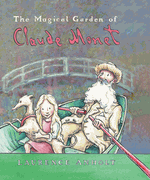
I stumbled upon The Magical Garden of Claude Monet by Laurence Anholt, a story based on a real incident.
The book made me think of Linnea in Monet's Garden by Christina Bjork. Then I learned that Philippe has been there, too.
Everyone has been in Monet's garden. My sister has been in Monet's garden. That would make a great picture book. Constance in Monet's Garden and Why Gail is Bitter.
 In response to my recent list of 7 Illustration Books You Need to Read, several EFII community members suggested some of their own favorite books. I’d have to say that the EFII readers have great taste in books, because each one they recommended is a great resource for Illustrators, and they have since been added to the growing collection in the EFII Bookstore.
In response to my recent list of 7 Illustration Books You Need to Read, several EFII community members suggested some of their own favorite books. I’d have to say that the EFII readers have great taste in books, because each one they recommended is a great resource for Illustrators, and they have since been added to the growing collection in the EFII Bookstore.
I like to give the EFII community members a chance to speak whenever possible, so today I thought I’d highlight those books and share the comments that were left.
How to Draw Comics the Marvel Way


Bob Ostrom: One of my all time favorites is “How to Draw Comics the Marvel Way”. It’s a little dated but still a great book. I recommend it to all my students.
Drawing Dynamic Hands


Melanie Matthews: Burne Hogarth’s books are fantastic, my favourite one of his is “Drawing Dynamic Hands”. I’ve found hardly any books dedicated to drawing hands (let alone, good books), which is odd because they’re so difficult to draw but such a crucial thing to know. He takes it further, and instead of being a book about drawing any old boring hands, his hands are expressive and full of character.
Rockwell on Rockwell: How I Make a Picture


3 Comments on Reader-Recommended Books for Artists, last added: 12/8/2009
I got a gift certificate to Amazon and decided to use it on this gorgeous hunk of bookiliciousness:
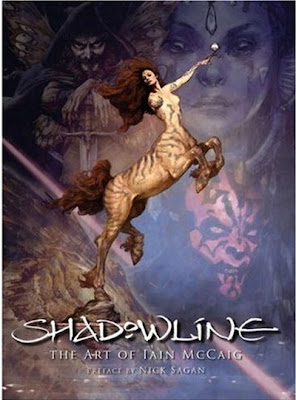 This overview of the art of Iain McCaig is gorgeously done - large, heavy, thick, glossy paper stock...
This overview of the art of Iain McCaig is gorgeously done - large, heavy, thick, glossy paper stock...
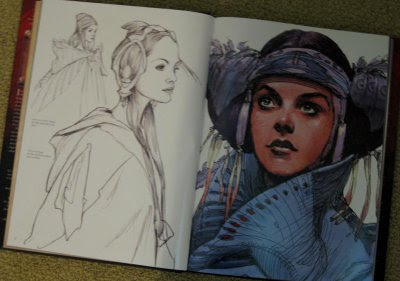
It's filled with sketches and concept art -
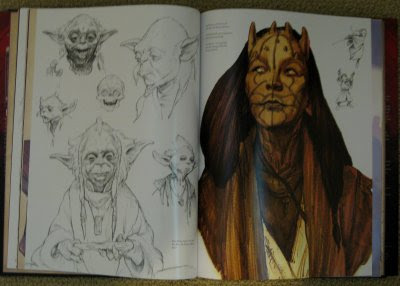 Mmmmmm
Mmmmmm......
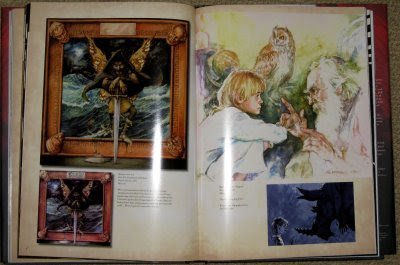
As well as instructional booklets! (how cool is that?), pen and ink, watercolor sketches and finished work.
So much amazing work. So much talent.
Sometimes I wonder why I bother....?
The Chronicle Books spring and summer children's catalog arrived last month. I only had time to browse, but Classic Western Stories, compiled by Cooper Edens, caught my eye because I'd recently recommended a western novel for YA readers. Plus, I've wondered in the past if kids would read western.
Chronicle Books publishes a lot of art books, including art board books.
Then back while I was on vacation (can you believe I'm still talking about that?), I bought a copy of that week's Sunday New York Times, a treat that goes back to my college days and one that I rarely have time for. That issue included an article called Hapless Boy Wins Eager Friends, about the popularity of the Wimpy Kid books by Jeff Kinney. I've only just read the article because I was on retreat from all kid reading while I was on vacation.
I have not yet read any of the Wimpy Kid books because they're written in diary format, and I have trouble getting enthused for reading those kinds of books. However, I hear a lot about them when I go into schools. Kids love them. The diary format doesn't bother them one bit.
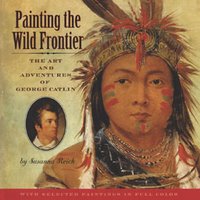
My impression of the nineteenth century is that it was a time when people had a big interest in things outside themselves—natural history, art, and philosophy, for instance. At the same time, you saw some remarkable bigotry. Susanna Reich's biography of George Catlin, Painting the Wild Frontier: The Art and Adventures of George Catlin, confirms my feelings about that incredibly interesting century.
You may not be familiar with George Catlin's name, but you've probably seen his work, particularly The Cutting Scene. Catlin was a nineteenth century artist who made painting American Indians (the term Reich uses) his life's work, both in terms of art and business. Early in Painting the Wild Frontier, Reich says of him, "Would people pay to look at paintings of Indians, he wondered, the way they paid to look at the Greek statues and the paintings of Revolutionary War heroes in Peale's museums?"
He gambled that they would.
The first part of Painting the Wild Frontier deals with Catlin the artist and adventurer. He believed the Plains Indians were still relatively untouched by contact with Europeans and seemed sincerely interested in documenting them and their lives with his art. Except for a few unattractive incidents that indicate that he was, indeed, a nineteenth century man, (the buffalo he shot but didn't kill and allowed to struggle in pain so he could sketch it from better angles, for instance, and his insistence on visiting a quarry considered a sacred site, even going so far as to take a sample of the rock away with him) Catlin comes off well during his productive years.
Making a living from art is almost always a problem, and in Catlin's case, he appears to have been a better painter than businessman. Though he ran successful exhibits in the United States and London, he wasn't able to hold on to money. An argument could be made that he also exploited Indians who appeared in his exhibitions. In his later years, he could have been a model for the artist tragically fallen on hard times.
When literary agent Nathan Bransford described his fantasy MFA Program he said, "Good nonfiction has an underlying arc and a satisfying conclusion." Reich definitely finds an underlying arch in George Catlin's life story, and while its conclusion may not be satisfying in terms of happily ever after, it's satisfying in terms of being a conclusion that fits in with what came before. While I kept hoping he would redeem himself as I read the latter part of the book, I can't say I was surprised when he didn't.
The art of our past is important because before cameras it was the only way to preserve how people and things looked. Archaeologists sometimes use art to help them date items--if a cup is similar to one in a painting from the late eighteenth century, then it, too, may very well come from that period. Thus Catlin's art is important no matter what we may think of him. Painting the Wild Frontier includes enough of it to almost be considered an art book. Some of the illustrations are in black and white, some are in color, and all are beautiful. Captions not only discuss the work, but identify the individuals in the paintings, making them real people who lived on after they were painted, who had families and perhaps descendants walking among us today.
Pay particular attention to the timeline at the back of the book, in which Reich shows us what was going on in the U.S. at various points in Catlin's life. While reading Painting the Wild Frontier, you'll definitely get a feeling for the nineteenth century world, but it's here in the timeline that you really get hit with some of the inconsistencies of the period. In 1838, for instance, while Catlin's Indian Gallery exhibit is a big hit with the citizens of four eastern cities, 4,000 Cherokee Indians die on the Trail of Tears while being forcibly relocated by the federal government.
This is a piece of work that could really get young readers interested not only in the subject covered but in reading history, period.
Painting the Wild Frontier has been nominated for a Cybil.
You can read a lot more about Painting the Wild Frontier next week, when Susanna Reich will be doing a blog tour. She'll be getting started on Monday at Becky's Book Reviews and stopping here on Thursday when we'll be talking history.
You and I both know that gaining exposure is imperative to success as an artist. Earning an income from our art is not an easy road. Thinking outside the square I have decided to use my graphic design skills to help us all by putting together a few well designed and helpful On-line book that will increase the audience we all need to increase sales.
I am going to offer all artist contributors to share in the profits as the intention is to get the books (and our art) out everywhere to maximize exposure for everyone and increase our painting sales and commissions.
Why am I sharing this idea with you?
My reasons are:
- I believe that marketing your art in solitude is not as effective as joining forces.
- Putting together a book on my own is a big job if I have to create all the content myself.
- I love painting, but I also love my graphics job and writing. It is kind of an obsession of mine. I love doing this sort of thing and I would like to share what I can with my art friends and community.
- I will also earn extra income and promote my work (equally)
- AND being in a flashy book is VERY VERY COOL!
Submissions: I am looking for a variety of mediums and styles but I want your best work. This book needs to be of value to the purchaser and a compliment to you as a capable artist. In saying that, the book is open to up and coming artists as well as the professional so don’t be afraid to have a go. Like I said send YOUR BEST EXAMPLES and I will endeavour to include as many as I can across the board. The e-book will include a tutorial or demonstration by you and a big promotion on you and your art.
I am calling for book submissions and tutorials for the following:
- Art in traditional mediums
- Illustration
I am very excited about this idea as I am sure you will be too.
If you want to be included in a book go to the submission page here and fill in your contact details so I can send you all the information you need to add your art and promotional details and information on book commissions. I want to get this out ASAP so as soon as there are enough entries I will be putting it together so don’t miss out. Go now to the submission page to add your name and your art in this book.
I look forward to helping you promote your art.
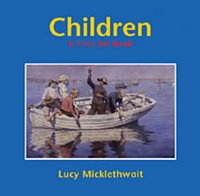
Children: A First Art Book by Lucy Micklethwait is a collection of works of art used to illustrate common childhood activities. I thought it was kind of interesting, a way of introducing children to the idea that looking at traditional art can be a pleasurable experience.
Micklethwait has a series of I Spy books that also serve as introductions to fine art.

By: Kayleen West.,
on 9/3/2007
Blog:
Kayleen West
(
Login to Add to MyJacketFlap)
JacketFlap tags:
free ebooks,
art books,
a painting a day,
afordable art,
art education,
artist life,
art lesson,
free ebooks,
art ebooks,
artist life,
art lesson,
art ebooks,
Add a tag
New FREE e-book on Artists Pitfalls.
As we speak I am finishing off my first free e-book for artists, which covers some of the pitfalls when learning to paint. I hope to launch it on this blog later this week. To make sure you remember to get a copy for yourself subscribe to my Easy Updates via the subscription form on the right panel of this blog.----------------------->
This free e-book will


Diego, concept and illustrations by Jeanette Winter, text by Jonah Winter, translated from the English by Amy Prince. Knopf, 1991
This is a concise little biography about the artist, Diego Rivera. Winter (The Librarian of Basra, 2005) begins Rivera's story with his birth. He was a sickly infant who survived because of the devoted care of an Indian healer. His twin brother did not live. He was a daydreamer in school but his parents encouraged his artistic abilities. He studied art in Europe but was inspired by his memories of life in Mexico. Winter ends the book as Rivera's career as a painter whose "murals told the story of the Mexican people" is just beginning.
The text is in English and Spanish. Each of Winter's illustrations is edged in a unique painted frame. I wish they had chosen to feature the illustrations in a larger format. The paintings are colorful and engaging and deserve more page space.


Clara & Señor Frog by Campbell Geeslin, illustrations by Ryan Sanchez. Schwarz & Wade Books, 2007
A fictional companion to the Diego Rivera story is this picture book, Clara & Señor Frog.
Clara is not happy when her mother is courted by a famous artist named, Miguel. In her mind Clara calls him Señor Frog. Her mother is a magician's assistant so Sara is fascinated with the idea of magic. Señor Frog's painting intrigues her and when he paints her, wearing a white peasant dress in a mural, she marvels at the "magic" that places her image on the wall. Señor Frog invites her to paint with him and Clara discovers that painting unleashes her own imagination or "magic."
Ryan Sanchez evokes the personage of Rivera with Señor Frog's rotund, mustached figure and his style as a muralist. The flowers that Clara is holding in her mural portrait are directly inspired by Rivera's paintings.


M is for Masterpiece: an art alphabet book by David Domeniconi and illustrated by Will Bullas, Sleeping Bear Press, 2006
Sleeping Bear Press is known for their alphabet books on various themes. This book shares the framework of the other books with handsome color and good layout.
Will Bullas's illustrations evoke the artist at work as many of the illustrations feature the "artist's" hand creating the picture. "V is for Van Gogh" is a close up of an artist's paint smeared hands painting a swirling sky. Closeups of paint tubes, colored pencils and brushes bring the tools to life.
The book includes the art of many cultures from Native Americans to Easter Island to African masks.
Q is for Quillwork
J is for Japanese Print
Domeniconi's text rides in a column to the side of each spread. His information is excellent. In addition to the traditional explanations for the subject he includes related stories. For example, in "L is for Landscape" he describes the enormous impact the
landscape paintings of Albert Bierstadt had on our country as they communicated the grandeur of the West to Easteners. I thought this was an inspired subject choice to illustrate the concept.
My only criticism is that this very interesting text was somewhat difficult to read because of the size of the type. It is an art to balance all the page elements with the amount of text but this was a shade too small for easy reading.
All in all, this is a nice survey of artists, media, techniques and art forms
A side note: I've been interested by Albert Bierstadt ever since the time I saw one of his paintings in an art gallery in Santa Fe, New Mexico. I was having fun looking at all the art but I kept going back to one painting on the wall. It was very small, maybe 12 inches long at the most. It showed a campfire with a few cowboys sitting nearby. The only light in the painting came came from the glow of the fire. I remember thinking it was a very intimate scene even though the great outdoors loomed in the darkness beyond the fire. When I asked someone how much it was, I learned it cost more money than the price of my house. The gallery person looked at my slack jaw and said, "Well, it is a Bierstadt." Used to his colossal works, I had not realized he was the artist of this small piece.
I sure can pick'em.


3-D ABC: a sculptural alphabet by Bob Raczka. Millbrook Press, 2007
Bob Raczka writes terrific books about art for children. His excellent Here's Looking at Me: How Artists See Themselves should be in every art teacher's collection. In 3-D he explores sculpture. Using an ABC book format, he presents a wide range of concepts and media.
His subjects are well chosen to engage young imaginations. Each work is presented with full attribution which includes the title, the artist, the date and the location of the piece. A page at the back gives full credit for the photography in the book too. The importance of properly citing resources and giving credit to the work of others should be and must be continually emphasized to students.
Everything works in this book from the clear typography to the clean layout. The art is beautifully photographed and tagged with a letter of the alphabet.
Concert for Anarchy by Rebecca Horn at the Tate Gallery in London is an inverted grand piano, hanging in midair with the keys spilling downward. It illustrates "U is for Upside Down."
A sculpture can make you look at things differently,
My favorite piece in the book is
Spoonbridge & Cherry by Claes Oldenburg and Coosje Van Bruggen at the Walker Art Center, Minneapolis, MN which is also the cover image. It is tagged with "S is for Spoon"
A Sculpture can make you Smile
This books will certainly make you smile and think about sculpture in a whole new way.
It was also nominated for the Cybil Non-fiction Picture Book award.
Bob Raczka's
website
A few weeks ago I received the children's spring/summer 2007 catalog from Chronicle Books. This is the first book catalog I've ever received that wasn't from my own publisher, so, of course, I took a look at it.
I'd never heard of Chronicle, but it publishes the Griffin & Sabine books, which I certainly do know about (and have read). According to its website, it focuses on "illustrated titles" and "visual books." The website also says "the company's philosophy was to publish books that were as affordable as they were beautiful."
Definitely a worthy sentiment.
I noticed that Chronicle was featuring a number of art books. As it turns out, I'm a sucker for kids' art books, probably because my knowledge of art is on a kid level. Among the titles that caught my eye:
Andy Warhol's Colors by Susan Goldman Rubin (a board book)
Charlotte in Giverny by Joan MacPhail Knight; illustrated by Melissa Sweet. This book was originally published in 2000. The paperback comes out in April.
Artist in Overalls by John Duggleby Published in 1996. The Chronicle catalog features it in both hardcover and paperback.
When Pigasso Met Mootisse by Nina Laden. Published in 1998! I read it back in 2005
Notice anything interesting about those books? Many of them are older titles, definitely not new this season. And yet Chronicle is still giving them space in its catalog. That looks like some serious support to me.



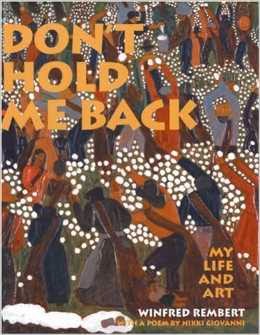

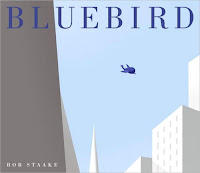




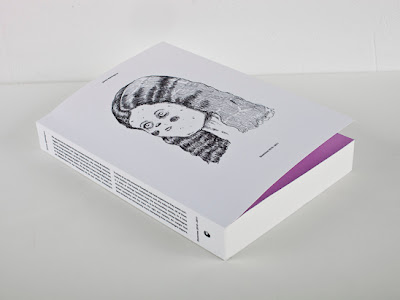
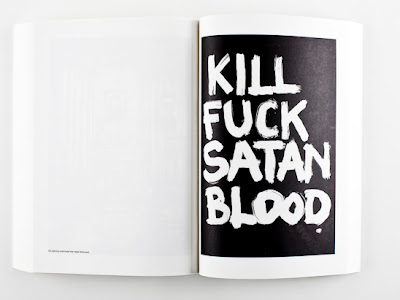

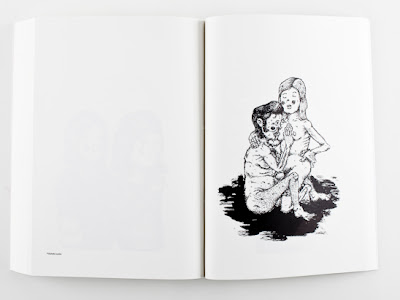

 In response to my recent list of
In response to my recent list of 












If there's a good thing to binge on, it is definitely picture books :) Thanks for sharing these two great ones with the KLBH!